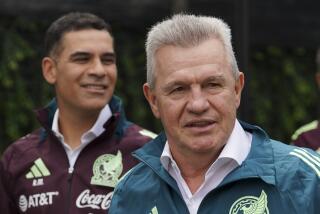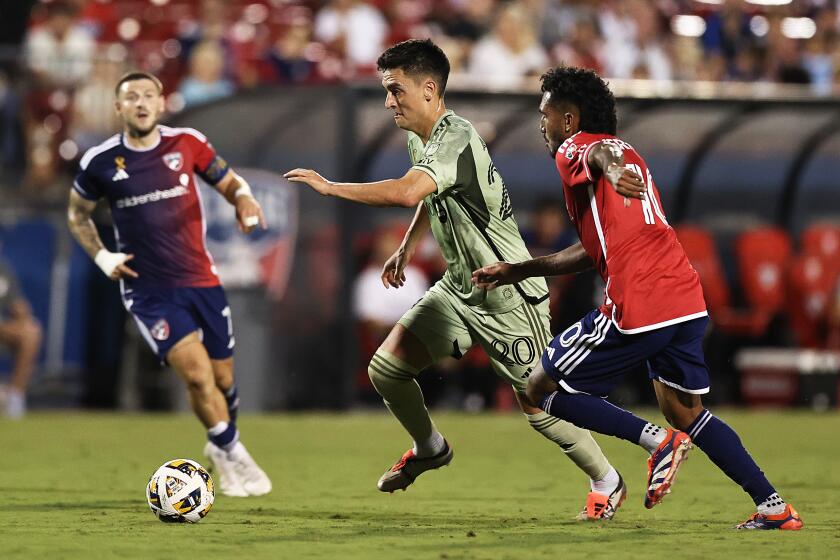Mexico soccer team is in good position to take on the world
For years, if not decades, Mexico’s national soccer team has been looked upon as something of a sleeping giant: talented enough to be respected but never successful enough to be feared.
Both the credit and blame for that goes to an insular soccer establishment that was good at developing Mexican players but even better at keeping them tethered to the country’s domestic league, preventing them from testing their skills in England’s Premier League, Spain’s La Liga or Germany’s Bundesliga.
But now, with Mexico beginning to discover the outside world, the slumbering giant may be about to wake. El Tri is likely to start nine players with European experience in next summer’s World Cup qualifiers, and as a result that’s a competition Mexico is expected to dominate.
“Finally the Mexican player is going to Europe. That’s the biggest difference,” says John Sutcliffe, a Mexican-born reporter who has covered the national team in five World Cups, most recently in 2010 for ESPN. “In the old days you had a lot of players who wouldn’t go.”
It’s a globe-trotting group led, famously, by 23-year-old striker Javier Hernandez, who joined Manchester United after the last World Cup and scored 19 goals in his first 40 appearances. And it’s a young group too, with just two of the nine European-based players older than 26.
The exodus of so many good Mexican players has caused reverberations at home — and not always good ones.
“It’s a double-edged [sword] kind of situation,” Sutcliffe says.
On one hand, because Mexico’s Primera Division allows each team to carry five foreign-born players, vacated roster spots have frequently been filled not by domestic prospects but by South Americans ineligible to play for the Mexican national team.
And though that has arguably paid off in more balance and excitement in Mexico’s top league, it may also be stunting the development of young players, who are forced to sit while foreigners play.
Last week when Tigres UANL won Mexico’s Apertura 2011 championship, it marked the team’s first title since 1982 and the fourth time in as many tournaments that a new winner has been crowned.
But with so many members of the Mexico national team having commitments to European club squads, Mexico Coach Jose Manuel de la Torre has been forced to call up 52 players in the last year, giving international experience to players who might not otherwise have had the chance.
Significantly, 28 of those players are younger than 23. To keep that pipeline flowing, Mexico’s soccer federation has begun using proceeds from the national team’s games abroad to fund developmental leagues for Under-15, U-17 and U-20 teams
Talent and experience can only take Mexico so far, though, in international play.
For the slumbering giant to truly rise and challenge the soccer elite, its players need to believe they can do so. They may have gotten that wake-up call in last summer’s CONCACAF Gold Cup final, when they spotted the U.S. a 2-0 lead, then rallied with four unanswered goals — all scored by European club players. That gave Mexico its second consecutive Gold Cup title and lifted it to ninth in the FIFA world rankings, its highest spot since 2005.
“Being down two goals to nil and coming back to beat the U.S., that proved to the Mexican players if they want to be the best in CONCACAF, they can do it,” Sutcliffe said.
Clearly the giant is taking baby steps now, focusing first on CONCACAF — where it is the region’s top-ranked team, a spot ahead of the U.S. After that it can begin setting its sights on the rest of the world.
“I don’t think it’s going to be a big issue for Mexico to qualify for the [2014] World Cup,” Sutcliffe says. “The big test will be the Confederations Cup a year before the World Cup in Brazil.
“That’s where we’re going to see if Mexico has done a lot.”








